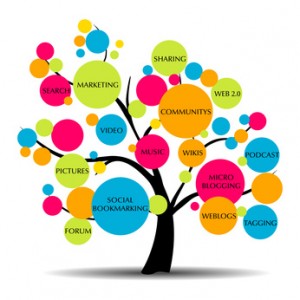With the advent of the Information Age and the rise of the internet, traditional marketing has had to compete with new online marketing strategies. Today, understanding the difference between traditional and online marketing is important for any twenty-first century business to maintain a steady supply of customers. But understanding this difference is futile if the targeted audience and their preferences are not also understood. Further, it is necessary to diagnose how online marketing tools can be used effectively in conjunction with traditional methods to maximize the effectiveness of a marketing campaign.
Traditional and Online Marketing
Traditional marketing includes the use of advertisements in print media such as newspapers and magazines, broadcast media such as television and radio, direct mail and telemarketing. Online, or digital, marketing, on the other hand, includes advertisements presented via digital media such as websites, social networking sites, banner ads on websites, Google ads and the like.
There are two very important differences between these two forms of marketing:
- The cost of online marketing is much more inexpensive than traditional marketing. In fact, many online marketing tools including email marketing campaigns, blogs, Facebook business pages and others cost nothing.
- Traditional marketing is monologistic whereas online marketing uses tools to create a dialogue between the business and the customer. With the rise of social media, businesses are able to maintain a virtual presence within the living room of their customers. One example of a successful interactive campaign includes the Marriage Equality Campaign of 2013 used by the Human Rights Campaign. Here, users replaced their profile picture with a pink equal sign on a red background or a yellow equal sign to illustrate their support of gay marriage.. There are numerous other successful interactive social media campaigns that traditional marketing tools simply could not implement because of their lack of a dialogistic platform.
Know Your Audience
Both traditional media and online media require understanding the audience toward which content is being advertised. Take age for example: the number of Baby Boomers using social media has skyrocketed in recent years going from 13 percent in 2009 to 43 percent in 2013. This pales in comparison, however, to the 89 percent of those aged 18 to 29 or the 78 percent of those aged between 30 to 48. Further, older audiences have grown accustomed to traditional marketing and may be less receptive to social media campaigns or other online marketing tools.
Of course, demographic audience targeting is a traditional marketing relic. It continues to dominate analytics tools such as Google Analytics but with new online marketing tools such as Amplitude which take to focusing on the behavior of individuals who visit a site rather than on their demographic characteristics this could change. While Google Analytics still dominates the market, Amplitude is growing and the use of demographic analysis may soon be replaced with more adequate behavioral analysis. Still, demography remains an important market of consumer behavior and is likely to remain so even as new tools for audience analysis develop.
Merging Traditional and Online Marketing Tools
Despite the benefits offered by online marketing tools compared to traditional marketing, the latter is not yet dead. In fact, when merged with online marketing tools, its effectiveness greatly increases. Take the QR barcode which can be placed within traditional advertisements or content such as billboards, poster, brochures, magazine, newspapers and the like. By simply scanning the code with a QR reader on a smartphone, the monologistic presentation becomes dialogistic. A conversation between the consumer of the advertisement and the advertiser becomes possible. This approach allows those who do not use QR readers and who would not be as susceptible to online marketing, such as older generations, to still be reached while opening the door to more effective marketing via online marketing.
A Website Valuation Tool
A great way to get an idea of what your online business is worth is to check use a valuation tool, which show the data on hundreds of sales, such as Site Price. Find businesses that are similar to yours in size, age, profits and business model. Then you can get an idea of the sales multiple that will likely be attributed to your website, and from there, and your website value.
Conclusion
There are many differences between traditional and online marketing tools and strategies. Cost and the ability for consumer interaction are key among these. While more and more people turn to the internet, traditional marketing still has its merits and is especially useful when used in conjunction with online marketing tools. It is highly recommended that both be used together to maximize the efficiency of a marketing campaign and increase the marketable value of an online business.

